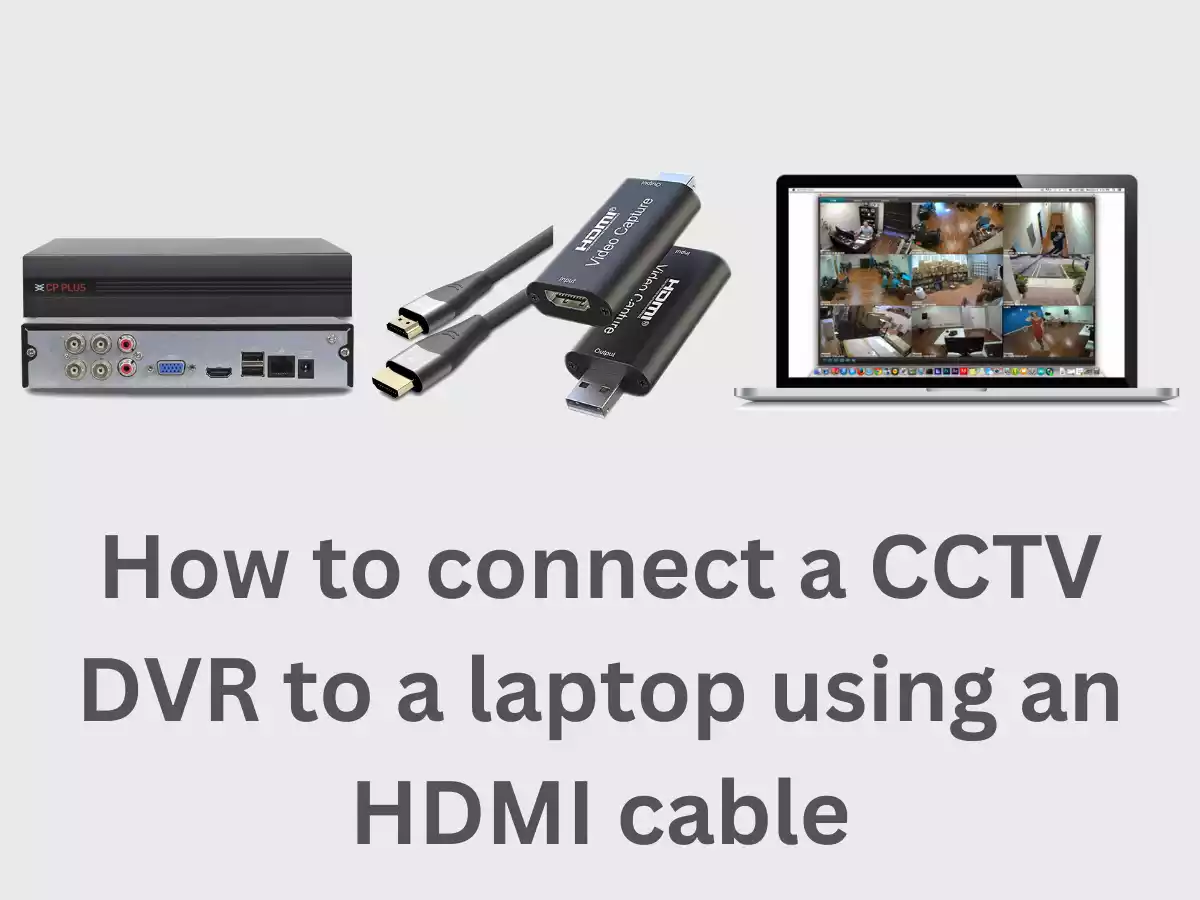How to connect a CCTV DVR to a laptop through an HDMI cable
If you have a CCTV camera DVR or NVR and want to access your cameras on your laptop, you’re in luck. It’s possible to connect your CCTV camera DVR or NVR to your laptop with the right hardware and software. In this post, we’ll show you the general steps to connect your CCTV camera DVR or NVR to your laptop without a monitor or TV.
A DVR (Digital Video Recorder) is a device that records and stores video from security cameras. It is commonly used in video surveillance systems, To view video footage from a DVR, you will need to connect it to a display screen like a monitor or TV through the appropriate cables, such as VGA or HDMI.
Directly connecting a DVR to a laptop is not feasible, as laptops do not have an HDMI input like a TV or monitor. However, you can use an HDMI video capture device to convert the HDMI signal to a USB stream. By connecting the HDMI video capture device to a USB port on your laptop, you can receive the video signal on your laptop for recording or streaming.
HDMI video capture device is a device that allows you to capture or record video from an HDMI source, such as a video game console or a DVR, and save it onto a laptop. The device connects to both the DVR and the laptop using HDMI cables, and it acts as an intermediary between them, encoding the video signal from the DVR or NVR and transmitting it to the laptop as a digital file. This allows you to capture and save high-quality video from the DVR or NVR.
Connecting a CCTV camera DVR or NVR to a laptop allows you to view and manage your security cameras on a laptop and take advantage of the features provided by surveillance software. By following a few simple steps, you can easily set up your CCTV camera DVR or NVR on your laptop and start monitoring your cameras without a monitor or TV.
To connect a DVR to a laptop via an HDMI video capture device, you can follow these steps:
- Make sure you have an HDMI video capture device that supports your DVR’s output resolution. You can find these devices online or at your local electronics store.
- Connect one end of the HDMI cable to the HDMI output port on your DVR and the other end to the HDMI input port on the video capture device.
- Connect the video capture device to your laptop using a USB cable.
- Install the software for the video capture device on your laptop. This software may come with the device or can be downloaded from the manufacturer’s website you can download OBS Studio software for this.
- Turn on your DVR and launch the video capture software like OBS Studio on your laptop. This software can be downloaded from the OBS studio website.
- In the video capture software, select the input source as the video capture device and adjust the settings as needed.
- Start recording or streaming your DVR footage on your laptop.
It’s important to note that the specific steps and software may vary depending on the make and model of your video capture device and laptop. Always refer to the manufacturer’s instructions for the best results.




